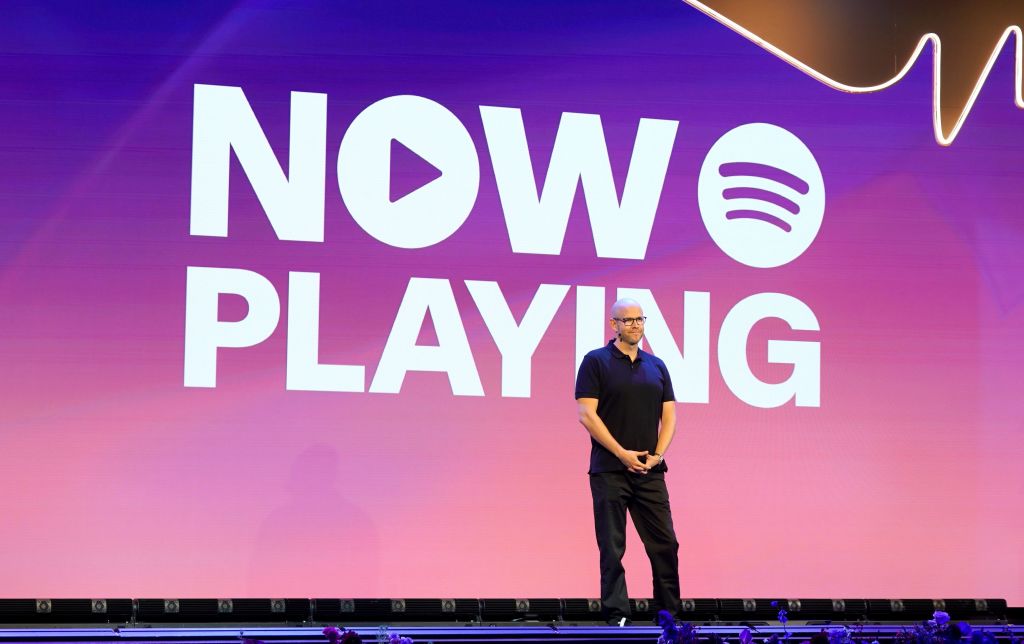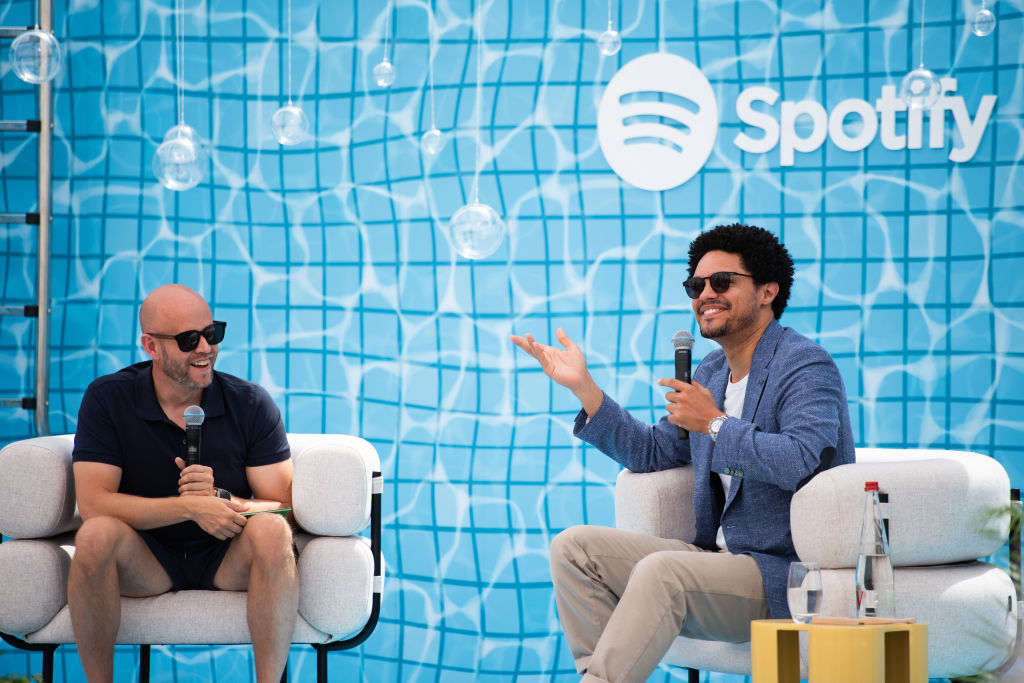
Presley Ann/Getty Images for Spotify)

Audio By Carbonatix
Spotify is haemorrhaging artists. In the last few months alone, a handful of indie bands have exited the streaming platform. If that includes some of your favourite musicians, you may be wondering how best to support them.
Among the artists leaving the platform is indie band Deerhoof. They reacted to the news that Spotify’s founder, Daniel Ek had used his venture capital firm to lead a €600 million (£528 million) investment in Helsing, a German defence company specialising in AI. Their statement said: “We don’t want our music killing people.”
This sentiment chimes with the attitudes of the many listeners who cancelled their Spotify subscriptions after the platform ran recruitment ads for ICE, the US’s controversial Immigration and Customs Enforcement agency.
The exodus reflects a general concern that major tech companies are too cosy with the Trump administration. Spotify’s USD $150,000 (£114,000) donation to Trump’s inauguration ceremony was cited by Canadian musician Chad VanGaalen as one of the reasons for his departure from the platform.
This year, make your gift count –
Invest in local news that matters.
Our work is funded by readers like you who make voluntary gifts because they value our work and want to see it continue. Make a contribution today to help us reach our $30,000 goal!

Graham Denholm/Getty Images
But these protests are as much driven by a recognition of ongoing structural problems with music streaming business models as they are by recent events. Music streaming platforms like Spotify, Amazon Music and Apple Music allocate revenue to artists on a pro-rata basis. This means that artists on each platform are entitled to a proportion of the overall revenue from streaming. This percentage is calculated by identifying the proportion of their streams that represent the total number of streams on the platform.
There is therefore no direct financial relationship between listeners and the artists that they listen to. This is an opaque structure that fuels musicians’ sense that they are not receiving fair remuneration.
The number of songs on Spotify and similar platforms has grown exponentially in recent years. By Spotify’s own admission, the growth in revenue from music streaming has resulted in a deluge of AI-generated content, with 75 million spam tracks being removed over 12 months in 2024-25.
Despite this success, it can be assumed that many such tracks remain undetected and that there are therefore significant amounts of money being given to fake musicians at the expense of real artists. Spotify’s openness to some AI content, exemplified by the continuing presence of the AI band Velvet Sundown in its catalogue, does not assuage artists’ concerns.
The bundling of different types of content can make the allocation of payments to musicians much more complicated. While Spotify’s music and podcast revenue streams are separate, its audiobooks have been bundled into its premium subscription. The effect of this change in 2024 has been to lower the royalty rate of the songwriters whose music appears on its platform. Around the same time the company decided to remove payments for songs that were streamed less than 1,000 times. This is likely to disproportionately affect artists struggling to get a foothold in the music industry.
Despite all this, overall revenue continues to grow. Spotify claims that the US$10 billion it paid to the music industry in 2024 was the largest ever annual payment by any retailer. Annual rises in the price point of its subscription in the last two years mean that its growth will likely sustain. That its latest quarterly figures revealed an operating profit of US$680 million seems to bear this out. This improvement in Spotify’s finances exacerbates musicians’ feelings that they are not getting their fair share.

Handout/Spotify via Getty Images
Where to go next
So, where can you go if you decide to leave Spotify? Given that its main competitors also use the pro-rata payment model and offer the same menu of unlimited music, then probably not to them.
Some streamers have experimented with user-centric models of payment whereby listeners pay directly the artists of the songs they stream. This, though, has had limited success, with Deezer capping its scheme to 1,000 streams per person per month, while Tidal ended its own experiment after two years.
There are, though, smaller platforms which deploy user-centric models of payment. Sonstream was popular for a while with independent artists, but at the time of writing, its website has only basic functionality.
Resonate is a cooperative with a pay-for-play user-centric model, which gives artists and rights-holders 70% of revenue, with the remaining 30% being ploughed back into the business. But the one that appears to come closest to combining an “artists-first approach” with a critical mass of musicians and listeners is Bandcamp. Each time a user purchases something on the platform, 82% of that transaction goes to the artist and/or their label. These payments have amounted to $1.6 billion USD to date for not only streamed music, but cassettes, CDs, vinyl records and t-shirts too.
This last observation reflects a wider trend within the music industry and among listeners. That is that the encroachment of algorithms and AI on the curation and listening of music has led many to ditch streaming platforms altogether. This has encouraged artists to be more innovative, with many experimenting with other means of distributing their music, including selling CDs and downloads directly, and setting up their own DIY digital platforms.
For Spotify and other streaming platforms, there is then a wider existential question about the extent to which it is possible to construct an economically viable business model that satisfies listeners while ensuring that musicians receive fair remuneration for their creativity.
This article is republished from The Conversation under a Creative Commons license. Read the original article.